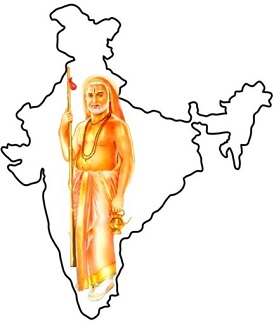Guru Raghavendra Swamy is considered a saint-God, a theologian and a scholar. Above all, a miraculous and benevolent seer who worked for the upliftment of human life.
Sri Raghavendra Swamy started teaching Dvaita philosophy and Madhwacharya principles to all his disciples at a very young age. In the process, he also created several compositions praising the lord. He began a series of pilgrimages across South India to propagate this vision.
He is said to have visited Dyupuri and Paripurnadevanagara( Paripurnadevanagara in Sanskrit means “place where God, who is complete in every way, resides”). At Manishrunga, he taught works such as PramaaNa Paddhati and realized that it would benefit the public, if sub-commentaries were written on these major works, to make it easier to understand them.
He also sanctified the holy places of Rameshvaram and Madurai by visiting them to spread the word of Dvaita doctrines. Madurai was the seat of learning in those days, and one of the experts there was Neelakanta Dikshit. It is said there was a series of intellectual debates and conversations between the two. In the end, however, Guru Raghavendra Swamy’s greatness, knowledge powers and expertise were acknowledged.
He gave extensive discourses at the holy shrine of Srirangam, especially on the Ishaavaasya upanishad. All his pilgrimages saw him create extensive writings, literature and manuscripts on Lord Vishnu and his omniscience. He visited Vishnumangala, where Trivikrama Panditacharya had debated Madhvacharya for fifteen days, and finally had become an ardent worshipper of Madhvacharya.
Sri Raghavendra, visited Subramanya and Udupi, where he started giving discourse on Sarvamula Granta. At Udupi, he sang his famous “Indu Enage Govinda” song upon seeing Udupi Sri Krishna. He was also present at Bidarahalli, and met Srinivasacharya. Sri Raghavendra admired his works and bestowed upon him the name Srinivasa Tirtha, as a mark of his high learning.
After leaving Bidarahalli, he went to Pandarapur, Kohlapur, & Bijapur. While residing on the banks of river Krishna, he wrote on Tattva Prakashika called Bhavadipa. He wrote a direct commentary on Anubhashya, called Tattva Manjari. At Malkhed, which is situated on the Kagini River, Raghavendra Swami explained that, just the way Kagini River joins Bhima river, then Krishna River, and finally the ocean, Sri Jayathirtha’s work explains Bhashya of Sri Madhvacharya, who in turn tells us of Lord Krishna, who is an ocean of auspicious qualities.
Raghavendra Swami undertook extensive tours, visiting Tirupati, Srisailam, Kumbakonam, and Kanchi. He neither stopped teaching his devotees nor did he stop writing books. During his pilgrimages, Raghavendra Swami not only covered a vast area geographically in the days when road conditions were poor and travel was arduous, but also wrote several works covering a vast area of the Tattvavada philosophy.

